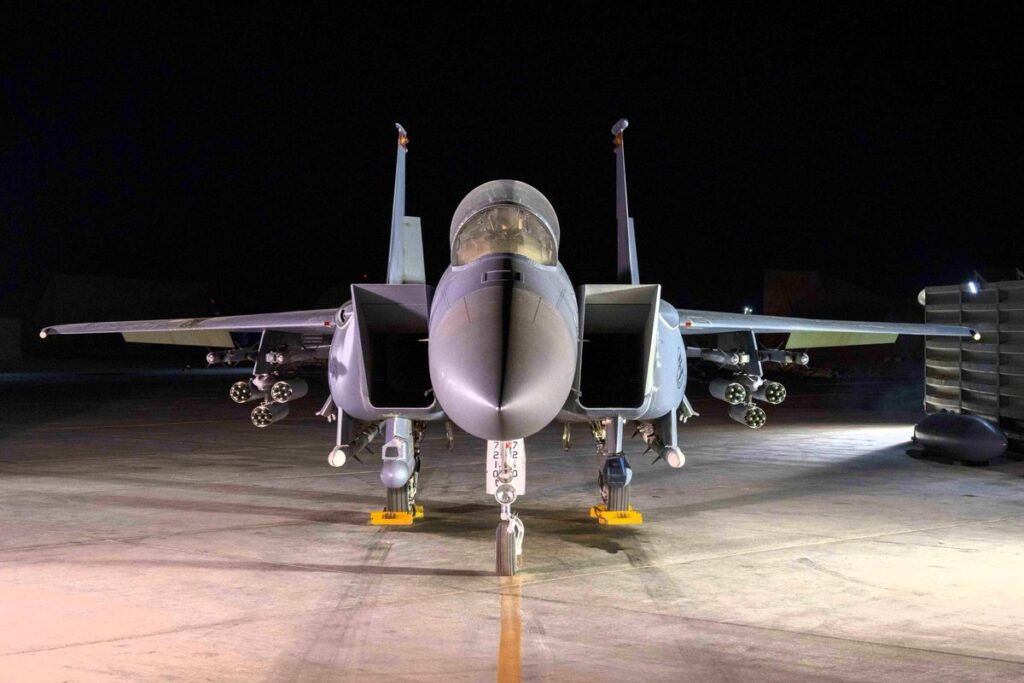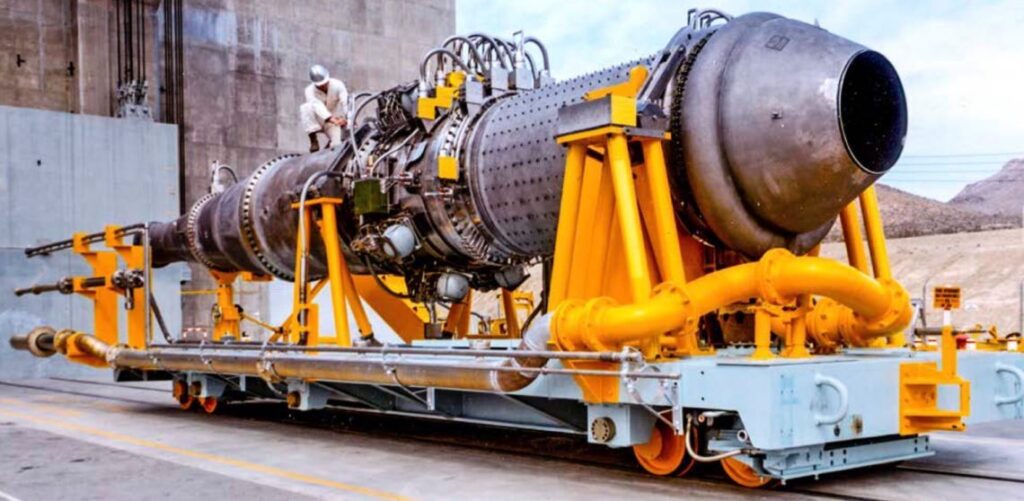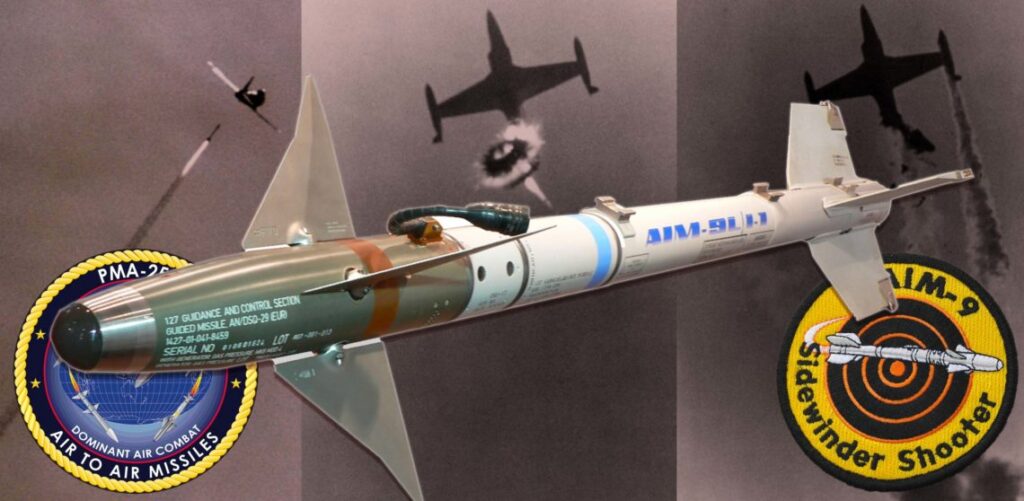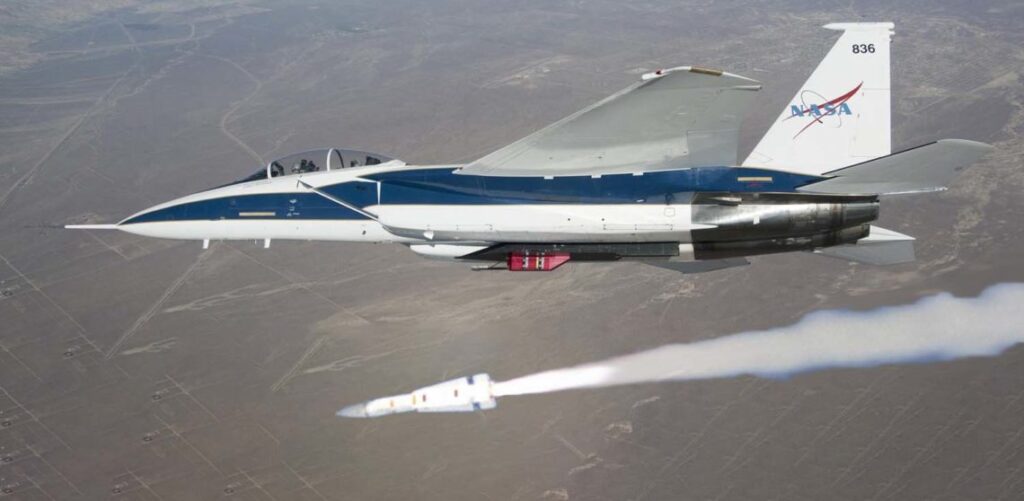Τhe U.S. Air Force and BAE Systems are bringing Ace Combat to life thanks to the Advanced Precision Kill Weapon System II and are equipping America’s favorite Mach 2 ground-pounder, the F-15E Strike Eagle, with an astounding 50 missiles!
Last week, U.S. Central Command posted an image of an F-15E Strike Eagle with an absolutely monstrous air-to-air loadout that included four radar-guided AIM-120 AMRAAMs, four more infrared-guided AIM-9 Sidewinders, and another 42 of America’s newest and smallest air-to-air missile, the infrared-guided Advanced Precision Kill Weapon Systems II, or APKWS II.
The APKWS II is a response to the increased threat that small inexpensive drones pose.
The new mini-missile is based on inexpensive 70mm unguided Hydra rockets and comes in two versions: a laser-guided version and a fire-and-forget infrared-guided one.
U.S. Air Force F-15E Strike Eagle in the U.S. Central Command area of responsibility. pic.twitter.com/xxg6F6LlqB
— U.S. Central Command (@CENTCOM) May 30, 2025
Although based on the Hydra, when the sky is full of enemy drones, taking them down one at a time isn’t optimal, so BAE Systems created its new missile around that.
The APKWS II comes with deployable fins and, depending on the version, a new infrared-guidance system or a laser seeker is housed in them. The laser-seeker version closes with the airborne kamikaze drones when they are targeted by the F-15’s laser designator, which is controlled by the jet’s back seater, who on the Strike Eagle is called the “weapons systems officer.”
Armed with a 10-pound high-explosive M151 warhead, these mini-missiles offer about half the explosive power of a Sidewinder. However, they have a blast radius of about 30 feet and a lethal fragmentation radius that can reach out to 150 feet making them perfectly suited for taking down drones as well as cruise missiles – and as importantly, they only cost about 1/50th the price of a radar-guided AMRAAM.
Unlike the AMRAAM, which rings it at around $1 million a piece, or the Sidewinder, at nearly $500,000, these smaller missiles only cost around $20,000 for the laser-guided version, and a slightly higher (but as yet unannounced) price for the fire-and-forget infrared guided missiles.
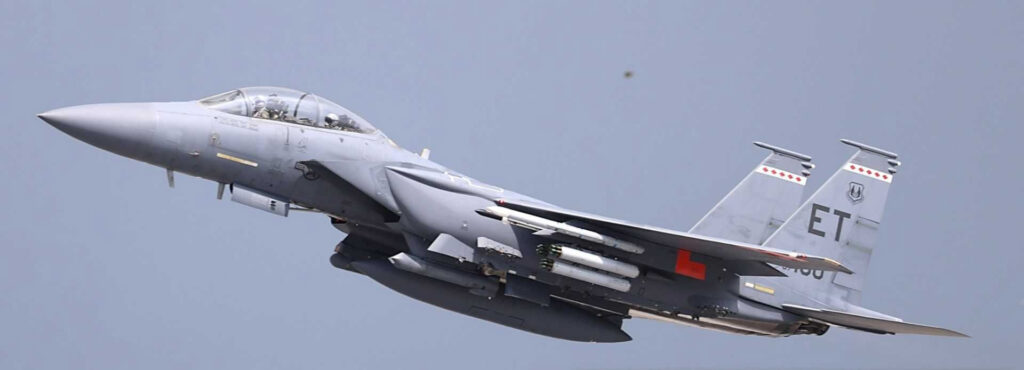
Yet, what really makes the APKWS II special is how it can be carried inside LAU-131A 7-shot rocket pods, which are already common equipment on a wide range of fixed-wing aircraft and combat helicopters. But the mighty Strike Eagle is arguably the best platform for these missiles, and for anti-drone operations, thanks to its back seater, who aids the pilot in the seat in front of him in target identification, and the jet’s ability to carry a great deal of ordnance.
With three of these pods on each side for a total of six, that gives this Strike Eagle an additional 42 air-to-air missiles to expend on slow-moving kamikaze drones like the now-infamous Shahed-136 employed by Iran against Israel and by Russia against Ukraine.
All together, that gives the F-15 the ability to engage as many as four airborne targets at ranges of around 100 miles or less, another four dynamic targets at ranges of around 20 miles or less, and then as many as 42 drones or cruise missiles at ranges of around seven and a half miles or less.
So, a formation of four Strike Eagles could engage a combined 200 airborne targets before heading back to be rearmed, instead of just 32 targets with standard air-to-air loadouts.
The missile is also very small.
Illustrating its small size, Sandboxx News recently published a video describing how you can 3D-print a detailed, full-scale replica of this new weapon, thanks to free print files posted online by a MakerWorld user known as “Rexi Labs.”
Read more from Sandboxx News
- The Army is working on a next-gen smokescreen that can disrupt enemy sensors
- Tu-95 Bear: The ‘old’ Russian bomber that can’t be replaced
- Keeping it weird – The most bizarre features on military firearms
- Winter woes and vehicle acrobatics in the Big Army
- Ukraine strikes Russia’s strategic bomber fleet in attack worthy of special operations history

